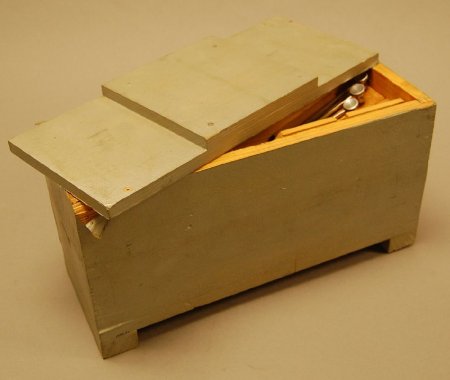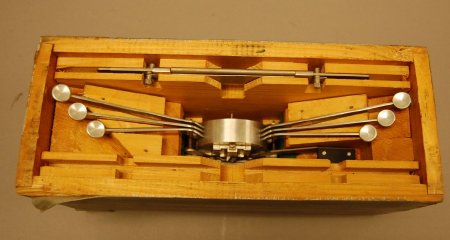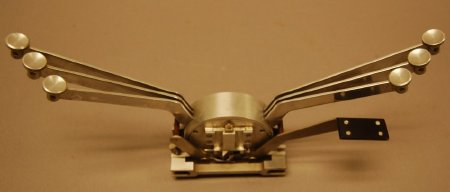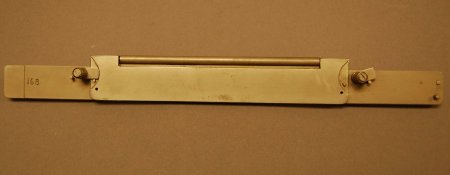Object ID:
1992.7
Title:
The "Crab" Duplicator
Description:
(a) Embossing machine from a hand operated machine for embossing braille onto aluminum stereotype plates; rounded bright aluminum and steel mechanism, embossing head on base, six bright aluminum keys on long arms played out to sides, three on each side; steel advance key below and right with black Bakelite pad; no markings; (b) steel interpoint plateholder, piano hinged clamp secured by two knurled-handleded bars which rotate into half circle cutouts, tiny pins on lower bar pokes up through corresponding hole in upper jaw of clamp, two large pegs on base of clamp would fit into desktop board (missing); stamped on left, "168" and on right "&"; (cd) wooden shipping box and lid, painted with gray industrial coating on exterior, interior compartment has cutouts for the mechanism and two plateholder clamps, green wool felt pads.
Dimensions:
H-13 W-32.5 D-5 cm
Date:
ca. 1968
Made by:
Royal National Institute for the Blind
Place of Origin:
Great Britain
Provenance:
Used to emboss aluminum stereotype plates by hand. "To obtain copies, the paper is inserted between the embossed folded plate which is then passed through the roller press (available separately) in between presspahn boards to afford protection to the braille characters." Based on design of RNIB's Stainsby Braillewriter, but with heavier cast iron carriage guide. Introduced originally as the "Hand Operated Machine for Embossing Aluminum Plates" by National Institute for the Blind. A complete version can be seen at 2006.60.1.
Credit Line:
Gift of Indiana School for the Blind, 1992.7.



